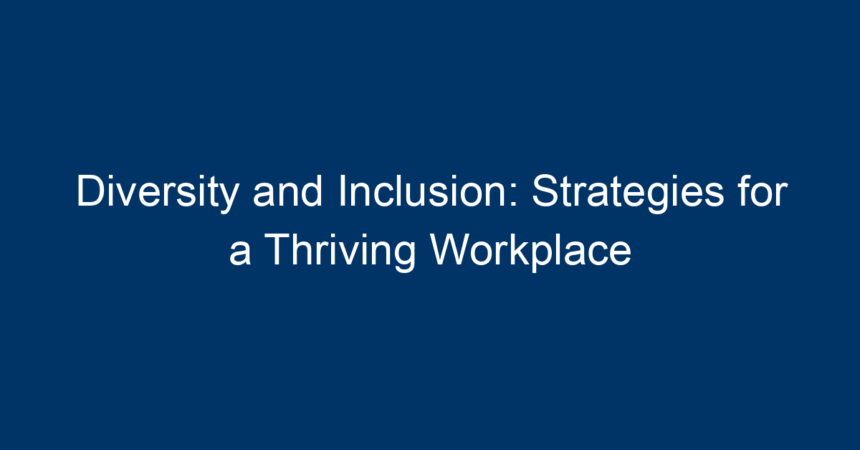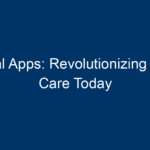In today’s rapidly changing business landscape, diversity and inclusion (D&I) have become more than just buzzwords; they are essential components of a thriving workplace. Organizations that embrace diverse perspectives and foster an inclusive culture reap numerous benefits, including higher employee morale, increased innovation, and improved overall performance. In this article, we’ll explore comprehensive strategies for enhancing diversity and inclusion in your workplace, driving engagement, and cultivating an environment where every employee feels valued and empowered.
Understanding Diversity and Inclusion
What is Diversity?
Diversity encompasses the various characteristics that make individuals unique. This includes race, gender, age, sexual orientation, ability, socio-economic background, and more. A diverse workplace brings together people from differing backgrounds, promoting a rich tapestry of experiences and viewpoints.
What is Inclusion?
Inclusion goes a step further by ensuring that all individuals feel welcomed, respected, and valued. It’s not enough to simply have diverse employees; organizations must actively cultivate a culture where everyone can contribute and thrive. An inclusive environment is where differences are celebrated, and all voices are heard, leading to better decision-making and innovation.
The Business Case for Diversity and Inclusion
Enhanced Creativity and Innovation
A diverse team brings a wide range of viewpoints, leading to creative problem-solving and innovative ideas. When employees feel included, they are more likely to speak up, propose unique solutions, and collaborate effectively. Studies show that companies with higher diversity levels are more innovative and outperform their competitors.
Improved Employee Satisfaction and Retention
Workplaces that prioritize diversity and inclusion often see higher levels of employee satisfaction. When employees feel valued for their unique contributions, they are less likely to seek opportunities elsewhere. Hence, organizations that focus on D&I tend to enjoy decreased turnover rates, saving on recruitment and training costs.
Better Financial Performance
Research from McKinsey and other firms consistently demonstrates that organizations with diverse leadership teams are more financially successful. Companies in the top quartile for ethnic and racial diversity are 35% more likely to outperform their counterparts in profitability. It’s clear: investing in diversity and inclusion can positively impact a company’s bottom line.
Strategies for Promoting Diversity and Inclusion
1. Assess Your Current Culture
Before making any changes, it is crucial to understand your current workplace culture. Conduct surveys, focus groups, or interviews to gather insights from employees. Understanding their perspectives will help identify areas for improvement and tailor your D&I strategies effectively.
2. Create a D&I Committee
Establishing a dedicated Diversity and Inclusion Committee can help drive strategic initiatives within your organization. This committee—composed of employees from various backgrounds and levels—can identify D&I goals, track progress, and ensure accountability across departments.
3. Training and Education
Investing in diversity and inclusion training is vital for fostering awareness and understanding. Workshops on unconscious bias, cultural competency, and effective communication can equip employees with the tools they need to contribute to an inclusive workplace. Ongoing training ensures that D&I principles are integrated into daily activities.
4. Develop Inclusive Hiring Practices
Review your recruitment strategy to eliminate bias and attract a diverse talent pool. This can include:
- Diversifying Job Boards: Post job openings on platforms that focus on underrepresented groups.
- Implementing Blind Recruitment: Remove identifying information from resumes to minimize bias in the screening process.
- Structured Interviews: Use standardized questions and evaluation criteria to ensure fairness in the hiring process.
5. Support Employee Resource Groups (ERGs)
Employee Resource Groups are voluntary, employee-led groups that foster a sense of belonging among employees from similar backgrounds. These groups can provide support, mentorship, and networking opportunities. Encourage the formation of ERGs to help employees connect and engage with others who share their experiences.
6. Offer Flexible Work Arrangements
Flexible work options can greatly enhance inclusivity, especially for employees with caregiving responsibilities or different needs. Offering remote work, flexible hours, and job-sharing options can allow all employees to perform at their best while accommodating diverse life situations.
7. Foster Open Communication
Encouraging transparency and open dialogue is crucial for inclusivity. Establish regular check-ins, feedback loops, and forums where employees can express their ideas and concerns. This promotes a culture where everyone feels their voice matters and encourages a collective commitment to D&I goals.
8. Measure Progress and Celebrate Success
Setting clear D&I goals and benchmarks allows organizations to track progress effectively. Regularly assess the impact of initiatives and celebrate milestones and successes. Recognition of these achievements reinforces the importance of diversity and inclusion in your workplace culture.
Overcoming Common Challenges
Resistance to Change
Change can be met with resistance. To effectively navigate this, communicate the benefits of diversity and inclusion clearly, ensuring everyone understands how these initiatives contribute to a stronger workplace. Engaging leadership as D&I champions can also help in leading by example.
Tokenism
One of the pitfalls of D&I initiatives is tokenism, where individuals are included merely to fulfill diversity quotas without genuine inclusion. To avoid this, focus on creating a culture where every employee feels valued and empowered to contribute meaningfully.
Measuring Impact
Effectively measuring the impact of diversity and inclusion efforts can be challenging. Use both qualitative and quantitative metrics—such as employee satisfaction surveys, turnover rates, and engagement scores—to assess the effectiveness of your D&I strategies.
Conclusion
Embracing diversity and inclusion is not just a moral imperative; it’s a strategic advantage that can lead to lasting success. By implementing these strategies, organizations can foster a workplace where every employee feels valued and empowered to contribute their best. As you take actionable steps toward enhancing D&I in your workplace, remember that progress requires commitment, ongoing effort, and collaboration.
In a diverse and inclusive environment, innovation flourishes, employee satisfaction increases, and companies are poised for sustained success. Make diversity and inclusion a priority in your organizational strategy today, and watch as your workplace transforms into a thriving hub of creativity and collaboration.




